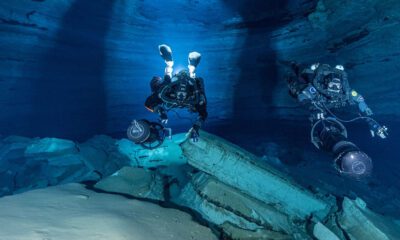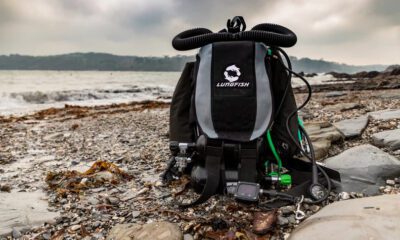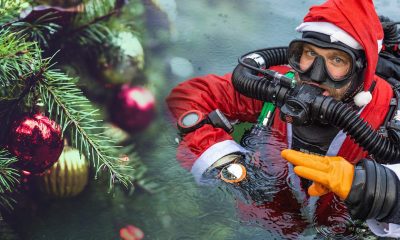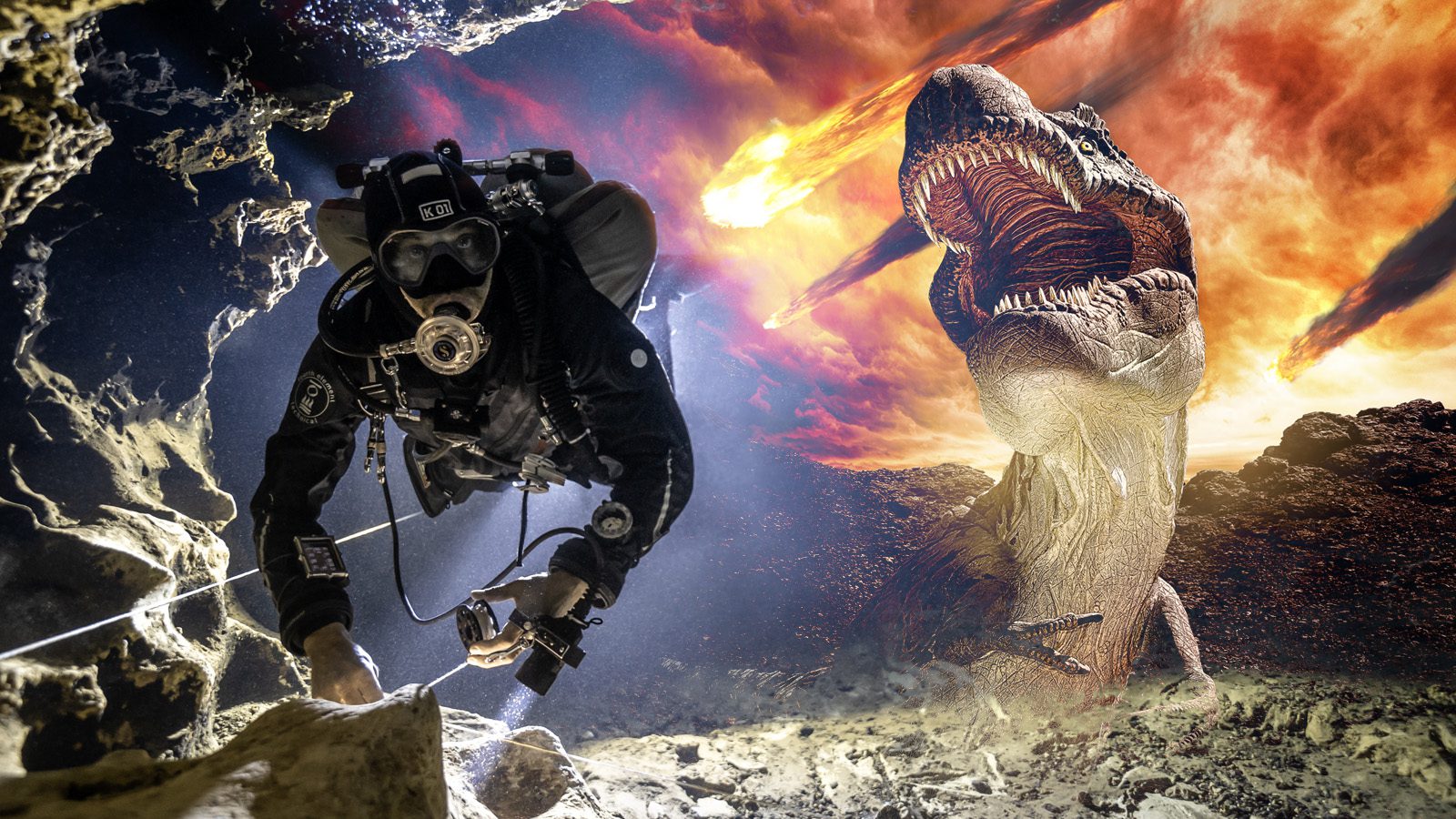
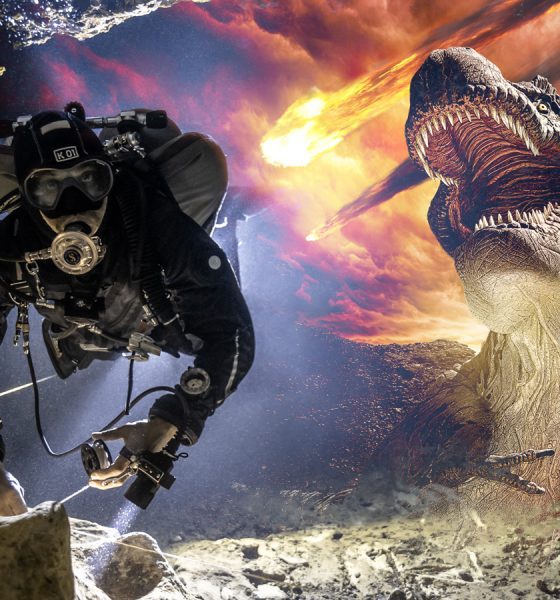
Equipment
Will Open Circuit Tech Diving Go the Way of the Dinosaurs?
Closed circuit rebreathers have arguably become the platform of choice for BIG DIVES. So, does it make any sense to continue to train divers to conduct deep, open circuit mix dives? Here physiologist Neal Pollock examines both platforms from an operational and physiological perspective. The results? Deep open circuit dives may well be destined to share the fate of the spinosaurus. Here’s why.
Text and illustrations by Neal W. Pollock, PhD. Header image: SJ Alice Bennett
Evolution is an important force in both the natural and technological worlds. Fundamentally, new features emerge, compete, and the champions face off against the next challengers. The process can be complicated with technology. New products emerge to a reception ranging from enthusiasm to suspicion; a trial period—often long—results in a consolidation of opinion; and successful products gain an increasing market share, although not for long if unacceptable issues or compelling new challengers emerge.
Compressed gas diving has always been reliant on technology. The critical early steps were the effective storage of a pressurized gas supply. Open circuit diving was facilitated by the creation of demand regulators, with the version developed in 1943 by Emile Gagnon and Jacques Cousteau acknowledged as the milestone of modern development. Open circuit diving technology made its way into the civilian community following World War II, and a series of innovations followed to improve utility and safety. J valves were introduced in 1951, offering a simple strategy to hold some of the gas supply in reserve, but imperfectly since divers could fail to set them, they could be bumped into the off position unknowingly, and the rapid increase in inspiratory resistance when they were working could be stressful.
Submersible pressure gauges appeared in 1958, providing much more information and increased confidence in supply monitoring. Buoyancy compensators appeared in 1961, reducing weighting concerns and improving surface safety. Automatic drysuit dump valves appeared in the early 1980s, simplifying buoyancy control. The line of advanced capability dive computers began in 1983, providing increased information and computational power to simplify dive planning, monitoring, and logging.
Closed circuit oxygen rebreathers also have a long history, with Henry Fleuss credited for developing the first commercially viable one in 1878. World War II provided the impetus for the creation of an array of new oxygen rebreathers, and a growing recognition of the need for equipment to enable safe diving in the range beyond that possible with oxygen systems.
Electro-galvanic oxygen sensors were developed in the 1960s, expanding the possibilities of mixed gas rebreathers. The Electrolung rebreather was released commercially in 1969, but a high number of fatalities stopped sales within two years. Development through the 1980s was mostly for extreme use in commercial, military, and specialized applications, including science, cinematography, and exploration. The combination of high cost, high maintenance burden, and high training demands made them most appropriate to military and scientific commitment.
More affordable and user-friendly technology became available in the late 1990s. Draeger released a semi-closed circuit rebreather in 1995. Semi-closed systems conserve the gas supply by allowing some expired gas to be rebreathed while some is lost overboard. They rely on a single gas supply, and the oxygen fraction varies with ambient pressure as it does with open-circuit systems. This technology will not be considered further here.
Peter Readey was developing the closed circuit Prism in the same mid-1990s timeframe, but the watershed event was the release of the Ambient Pressure Diving Inspiration rebreather in 1997. A review of rebreather use in scientific diving from 1998-2013 indicated that Ambient Pressure systems were used for almost 60% of the 10,200 dives logged on 17 different rebreathers by American Academy of Underwater Sciences members.1
Many of the improvements in control, monitoring, and planning helped divers gain comfort in reaching beyond the traditional limits of recreational diving. Open circuit systems provide an open architecture that can be easily expanded. Independent cylinder/regulator/gauge components can be added to provide various travel, bottom, and decompression mixes. The practical limitation becomes the number and bulk of components that a diver can effectively handle—a number that can increase with training, planning, and practice, but only so far.
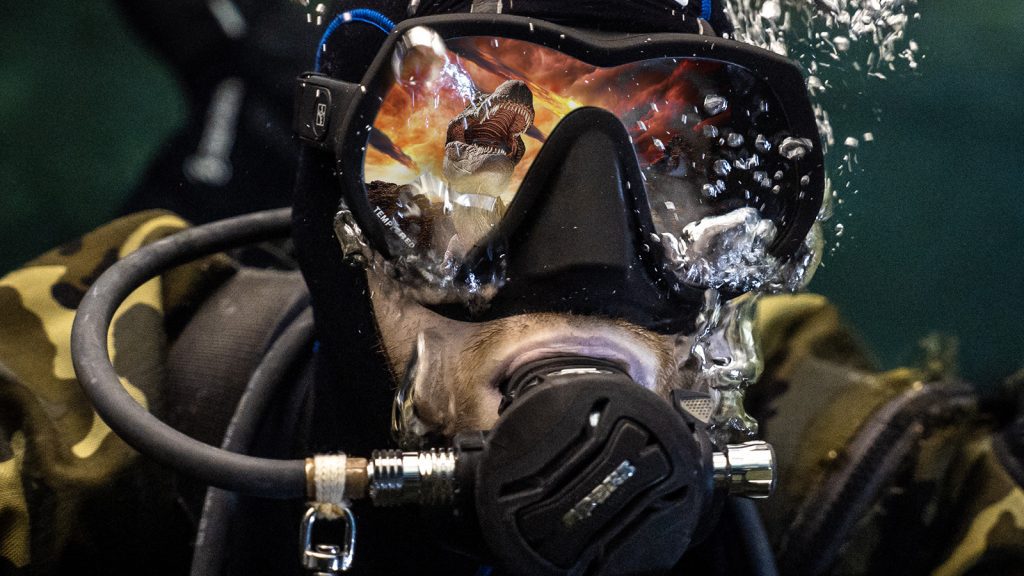
The term “technical diving” was coined by then aquaCORPS Journal publisher Michael Menduno in 1991 to reflect the complex equipment configurations and practices evolving in the community to expand the diving range. Most of the early efforts were with open circuit configurations, largely due to availability, reliability, and flexibility of the platform. While complex configurations can test diver limits, managing them effectively can also serve as a marker of achievement that is compelling in its own way.
Perceived Strengths of Open Circuit Systems
Closed circuit technology is inherently more complex than open circuit technology, but the complexity of units designed for the most extreme exposures can provide a misleading point of reference. The design sophistication, reliability, and simplicity of use has continued to advance, particularly for units designed for less extreme applications. The maintenance and operation burden have been substantially reduced, many high-risk and user error failure points have been engineered out or substantially minimized, and the forgiving nature of the units enhanced. It is harder to put units together incorrectly, component reliability has improved, the work of breathing reduced, and internal backups and checks increased.
Fans of open-circuit technology may value the inherent simplicity, but this is compromised by the number of pieces required to accommodate technical diving. The simplicity of individual components may remain, but the collective complexity can be quite high, and the number of individual high-risk failure points substantial. Differences in points of attachment, materials, marking, and mouthpieces can all help to ensure that a switch is made to the right gas, but the possibility of making errors increases as components are added. Every extra pressure line and o-ring also represents an additional point of potential failure.

The cost of closed circuit equipment is a barrier, but this too can be misleading. While the initial cost of rebreathers is high, it should not be compared to that of a basic open circuit system, but to the cost of all of the components needed to achieve the desired, if not comparable, capability. This can include multiple cylinders, regulators, harnesses, manifolds, gauges, and the maintenance burden of all.
Closed circuit systems do require time to properly setup and test equipment pre-dive, and a meaningful share of attention throughout dives for monitoring. However, neither the preparation nor monitoring time is out-of-line with that required for complex open circuit technical setups. The ability to check and rely upon a smaller number of pieces of equipment has advantages, particularly as dives become more demanding.
Advantages of Closed Circuit Systems
Closed circuit technology offers some clear benefits to divers. The most obvious is operating cost. While money will be spent in replacing oxygen cells and carbon dioxide scrubber material, a great deal of money can be saved on breathing gas. Gas consumption during open-circuit breathing increases proportionately as a function of ambient pressure, while gas consumption with closed circuit breathing is unchanged by depth. The cost of compressed air for shallow open circuit dives may not be problematic, but the cost of nitrox is high in some places, and the cost of helium for open circuit mixed gas diving is staggering. Divers operating in the depth range of heliox or trimix can see tremendous cost-savings with rebreathers.
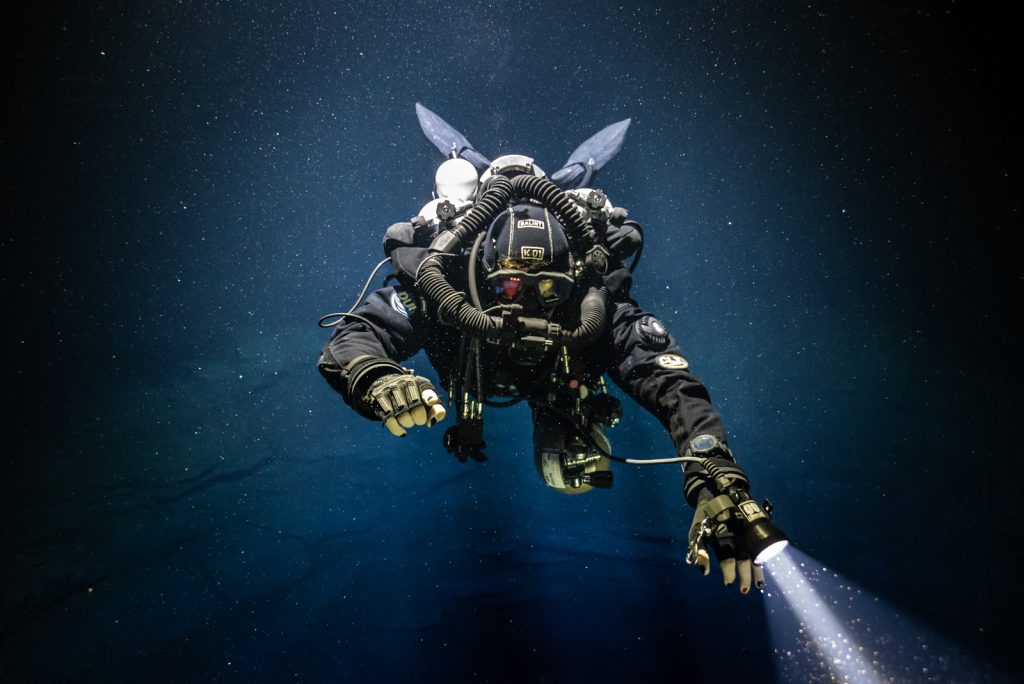
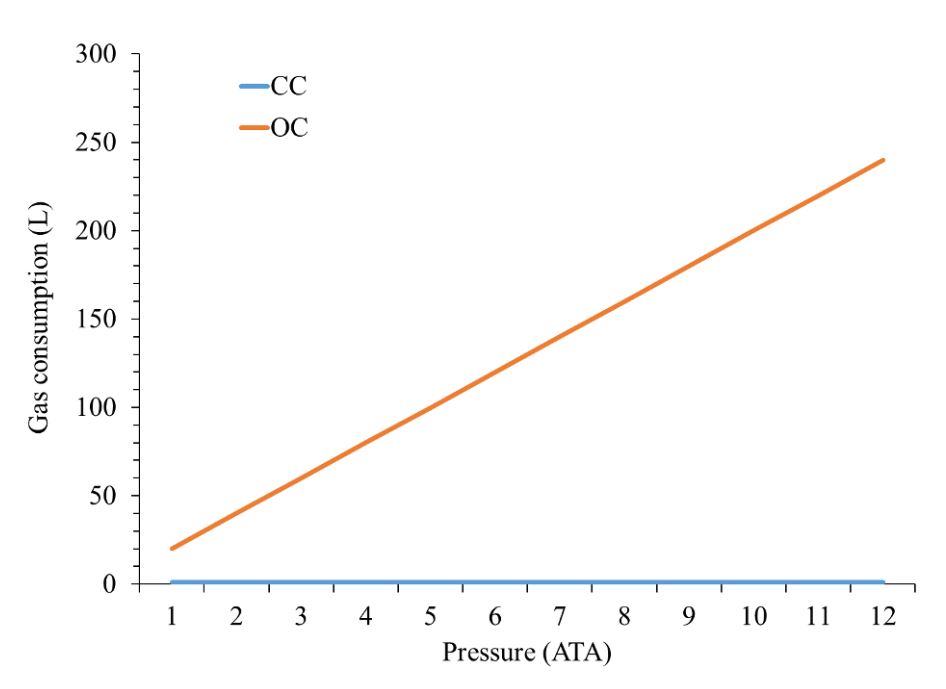
One of the challenges in diving is that many of the greatest hazards are invisible. While graphic predictions are sometimes provided by dive computers, divers cannot see their actual inert gas uptake or elimination rates or their proximity to decompression or oxygen toxicity limits. Rebreathers do not change this reality, but they can materially change both patterns and hazards.
Mixed gas rebreathers continuously monitor, and in the case of electronic systems, automatically regulate oxygen levels in the breathing loop in accordance with the setpoint, which is usually diver-designated. A typical setpoint will moderate inert gas uptake through much of the diving range during the descent and bottom phase, and will dramatically augment inert gas elimination and reduce decompression stress during the ascent phase.
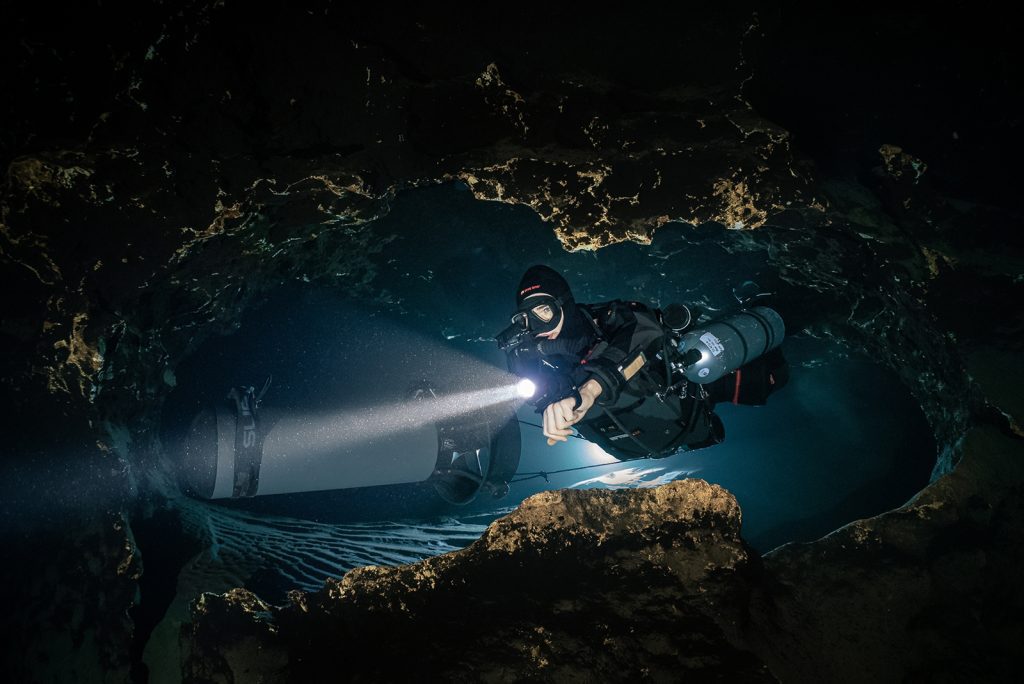
For example, a setpoint of 1.3 bar/1.3 atm equates to breathing air at a depth of about 52 meters of seawater (msw)/170 feet of seawater (fsw). Using a rebreather with this setpoint at any point shallower favors decompression safety over open-circuit air breathing. The difference is greatest in the shallowest water, which accelerates inert gas elimination during ascent. Considering air as the diluent gas in a rebreather, at 9 msw/30 fsw the nitrogen content would be 0.61 bar/0.6 atm, less than that breathed in air at sea level. At 3 msw/10 fsw there would be no nitrogen in the breathing mix at all. This compares to a PN2 of 1.02 atm breathing open circuit air, which represents a massively less favorable gradient for eliminating inert gas.
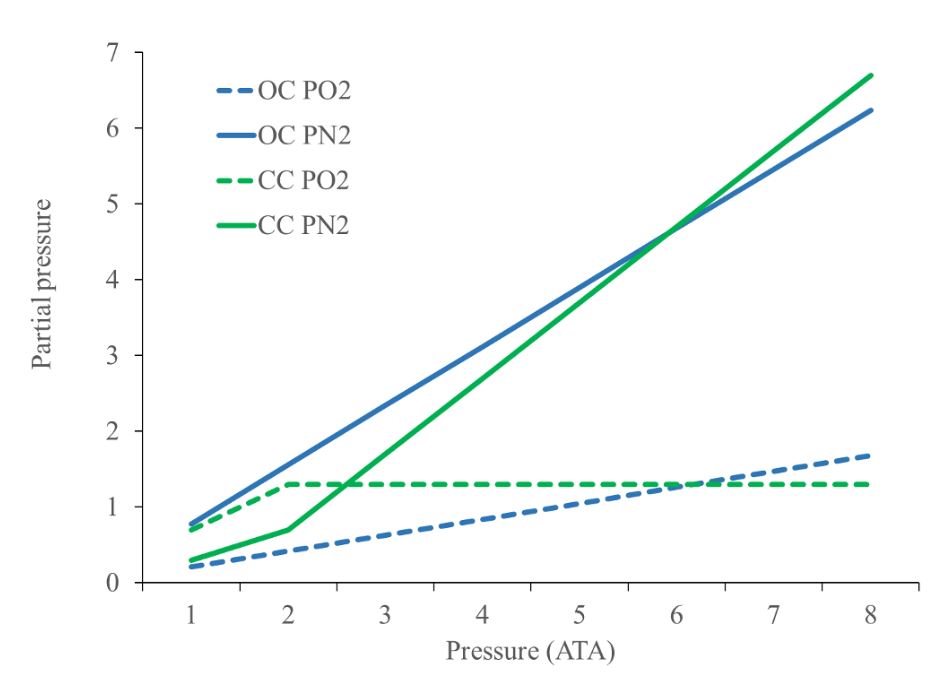
The oxygen setpoint is chosen to balance the risks of decompression stress and oxygen toxicity.2 Electronic rebreathers make continual adjustments to maintain the setpoint, which can reduce physiological stress. Open circuit gas concentrations vary strictly as a function of ambient pressure, which limits the range through which a given gas mix should be used.
Switching breathing gases in open-circuit configurations can control oxygen and inert gas levels, but in a very inefficient manner. The need to limit the number of gas switches means that gas fractions are rarely optimized, and can easily approach or exceed accepted safe limits at least transiently, and potentially much more so if the dive profile does not follow the plan. While the research evidence is understandably limited, gas switches may also increase the risk of oxygen toxicity and inner ear decompression sickness.
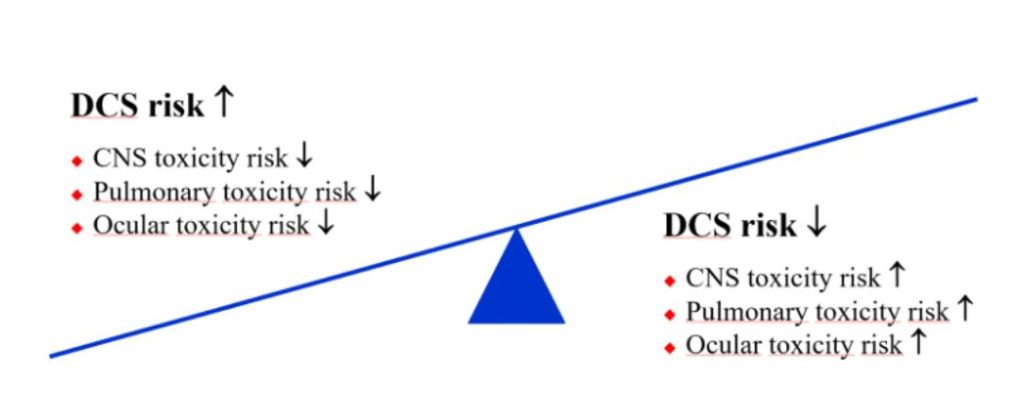
A lesser but still important benefit of closed circuit rebreathers is the fact that the gas breathed is warmed and humidified. The warming, a product of the chemical reaction in the carbon dioxide scrubber, can reduce thermal stress, and the humidification both reduces respiratory heat loss and improves comfort.
Points of Discussion for Closed Circuit System Use
There are several rebreather-related hazards that are not typical concerns of open-circuit divers. Substantial water volumes entering the breathing loop can react with the carbon dioxide scrubber material to produce a caustic foam that cannot be breathed. If oxygen injection into the loop stops, a hypoxic state can develop. If oxygen injection into the loop continues unchecked, a dangerously hyperoxic state can develop. Engineering has reduced the risk of all of these events. Effective water traps make it less likely for substantial volumes to reach the scrubber, and release valves make it easier to clear water from the loop. Oxygen monitoring and control systems are increasingly resistant to failure and provide continuous real-time information to divers to inform divers.
While some emergency situations can develop quickly, many problems advance slowly with closed circuit systems, allowing divers time to consider options before taking action. Gas supply efficiencies offer clear advantages over open-circuit systems. Real-time warnings can also provide a cushion. For example, not only can divers see current values at any time, dedicated hypoxia warnings are typically activated at 0.41 bar/0.4 atm, almost twice the normal oxygen concentration breathed. This means that the physiological hazard is still a future event. In many cases, modern rebreathers provide the luxury of time to make necessary corrections or, if appropriate, to bail off of the loop and onto a backup breathing system.
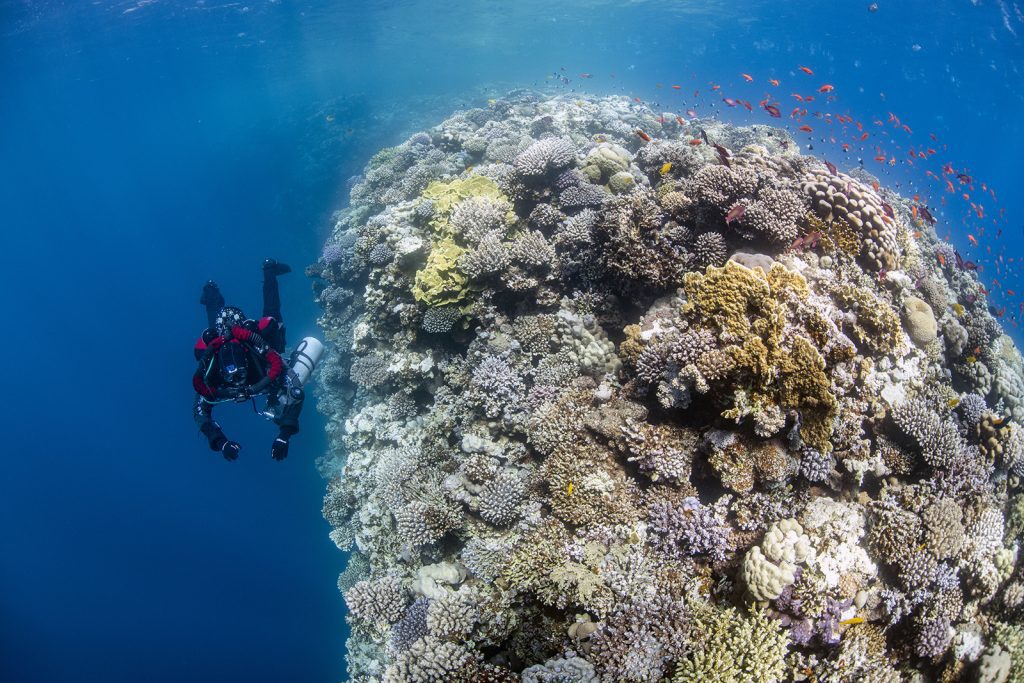
System engineering has solved many, but not all, issues with rebreathers. Oxygen monitoring technology is reasonably robust, but imperfect, which demands ongoing attention of divers. Carbon dioxide monitoring is still inadequate. While it is generally more difficult to configure systems incorrectly, divers do need to take responsibility to change scrubber material at appropriate intervals.
Closed circuit rebreathers provide an array of enabling technologies. The economical gas use can make deeper and longer dives much easier to complete, and technical diving computers provide huge flexibility in dive planning and on-the-fly adjustments in plans. The safe range expansion is not unlimited, however. One critical soft limit results from the fact that the decompression algorithms used for deep exposures are developed as extrapolations3 from shallower computations with little or no physiological testing. Mathematical extrapolations from limited shallow water data are unlikely to provide perfect predictions for deeper exposures. They may be conservative, but they may also be liberal. It is critical to remember that math does not equal physiology—ever. A critical hard limit is work of breathing, which increases with depth and gas density. Recent discussion of gas density issues has increased awareness,4 but more effort is needed to ensure that rebreather divers consistently consider both narcotic potential and gas density in dive planning to choose appropriate gases and depth limits.
Arguments have been made that divers should learn open-circuit technical skills before learning closed circuit technical skills. While there certainly has to be knowledge of open-circuit to manage bailout to open circuit situations, it does not follow that one skill must precede the other. Divers can be trained safely in closed circuit techniques from the outset of their diving. This is similar to drivers learning to drive automatics with no manual transmission experience, or pilots learning precision instrument landing approaches without non-directional beacon approach experience. Learning a wide range of skills can be useful, particularly when it reflects a breadth of experience, but it is more myth than truth to say that training in one mode requires foundations in another for safety.
Where is Rebreather Diving Going?
Rebreathers are not a good choice for all divers. They require care in setup and constant monitoring during use. Divers who are not willing to commit the time and effort should stick to the most uncomplicated open circuit diving. A lack of commitment should also discount open circuit technical diving.
Diving is best when it is conducted smartly and safely. While chasing records will always appeal to some, there is probably a lot more pleasure and productivity to diving within skill and comfort zones that are well within the nominal functionality of any piece of equipment used. Rebreathers can offer substantial benefits in reducing decompression stress throughout what we think of as the normal recreational range. They can be used to expand the dive range more efficiently than can open circuit systems, but not without risk. Distance from the surface is important and increasingly unforgiving. A modest expansion of range can provide the best compromise of new experience and safety.
Divers who wish to prioritize gas supply conservation, decompression stress minimization, operational flexibility, and reliance on a single primary platform (with appropriate bailout capability) may wish to consider closed circuit. Those who like technology and value the insights of tracking their status throughout dives will get an extra bonus.
Those who want to expand their diving range in depth or time should consider the relative merits of investing in and diving with large amounts of open circuit equipment versus potentially more compact closed circuit systems (again, with appropriate bailout equipment). Open circuit technical diving can allow some expansion of the range over non-technical open circuit diving, but operational demands will quickly force a complexity of setup and management obligations that can be problematic. Open circuit technical diving provided an important stepping stone in the development of our diving range, and will remain important for uncomplicated recreational range activities, but closed circuit technology offers a tool with benefits in the traditional recreational range and clear superiority in the technical diving realm.
Is deep open circuit tech diving destined to share the fate of the spinosaurus? Complete our short OC vs CCR survey to help us find out.
See companion story: GUE and the Future of Open Circuit Tech Diving by Ashley Stewart
References
- Sellers SH. An overview of rebreathers in scientific diving 1998-2013. In: Pollock NW, Sellers SH, Godfrey JM, eds. Rebreathers and Scientific Diving. Proceedings of NPS/NOAA/DAN/AAUS June 16-19, 2015 Workshop. Durham, NC; 2016: 5-39.
- Pollock NW. Oxygen partial pressure – hazards and safety. In: Cote IM, Verde EA, eds. Diving for Science 2019: Proceedings of the AAUS 38th Scientific Symposium. American Academy of Underwater Sciences: Mobile, AL; 2019: 33-38.
- Balestra C, Guerrero F, Theunissen S, et al. Physiology of repeated mixed gas 100-m wreck dives using a closed-circuit rebreather: a field bubble study. Eur J Appl Physiol . 2022;122: 515–522.
- Anthony G, Mitchell SJ. Respiratory physiology of rebreather diving. In: Pollock NW, Sellers SH, Godfrey JM, eds. Rebreathers and Scientific Diving. Proceedings of NPS/NOAA/DAN/AAUS June 16-19, 2015 Workshop. Wrigley Marine Science Center, Catalina Island, CA; 2016; 66-76.
Dive Deeper
InDepth: Electrolung: The First Mixed Gas Rebreather Was Available to Sport Divers in 1968 by Walter Starck
aquaCORPS N12: Designing a Redundant Life Support System by William C. Stone (1995)
InDepth: What Happened to Solid State Oxygen Sensors? by Ashley Stewart
Alert Diver: Do You Know What You’re Breathing? by Michael Menduno
Shearwater Blog: BENEFITS AND HAZARDS OF HIGH OXYGEN PARTIAL PRESSURE

Neal Pollock, PhD, holds a Research Chair in Hyperbaric and Diving Medicine and is an Associate Professor in Kinesiology at Université Laval in Québec, Canada. He was previously Research Director at Divers Alert Network (DAN) in Durham, North Carolina. His academic training is in zoology, exercise physiology and environmental physiology. His research interests focus on human health and safety in extreme environments.




